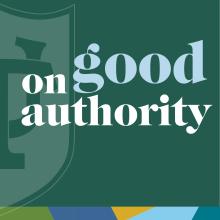Robert Garry
Professor

Biography
In 1983 Dr. Garry was appointed Assistant Professor of Microbiology and Immunology at Tulane University School of Medicine in New Orleans, Louisiana. In 1985 he was Visiting Professor of Pathology at the University of Southern California working with Dr. Suraiya Rasheed. Dr. Garry spent 1991 as a Visiting Professor of Molecular Biology at the University of Hamburg working with Dr. Gebhard Koch. Since 1993 he has been Professor of Microbiology and Immunology at Tulane Medical School. Dr. Garry has published over 100 papers in the area of retrovirology. Research in the Garry Laboratory focuses on a number of aspects of retroviral pathogenesis. Investigations have found that HIV induces a number of defects in plasma membrane ion transport, which could account for the loss of CD4+ T-cells in AIDS patients. Another research interest is the molecular characterization of an isolate of HIV from a patient who died of AIDS in 1969. This is the earliest confirmed case of AIDS in the United States. In addition, the lab has discovered a retrovirus named human intracisternal A-type retroviral particle (HIAP), which appears to be involved in systemic autoimmune diseases and idiopathic CD4 T-lymphocytopenia. More recently, the lab obtained evidence for the existance of a human endogenous retrovirus named human mammary tumor virus (HMTV), which is a close homolog of a virus which causes breast cancer in mice.
Dr. Garry is currently managing a consortium of scientists who are developing countermeasures, including diagnostics, immunotherapeutics and vaccines, against Lassa virus, Ebola and Marburg viruses, and other high consequence pathogens. Our team has produced Lassa fever and Ebola point-of-care and confirmatory diagnostics based on recombinant proteins. A combination of human monoclonal antibodies has been shown to rescue 100% of monkeys even when treatment is initiated at an advanced stage of disease. Studies on a combination Lassa fever and Ebola vaccine for use in West Africa have been initiated. Productive collaborations have been exploited to deepen understanding of the natural history of viral hemorrhagic fevers while providing training for West African scientists and further developing research and clinical trial infrastructure in Sierra Leone and Nigeria.
Education
University of Texas at Austin
Indiana State University
Articles
Proteomics Computational Analyses Suggest that the Antennavirus Glycoprotein Complex Includes a Class I Viral Fusion Protein (α-Penetrene) with an Internal Zinc-Binding Domain and a Stable Signal
2019
A metatranscriptomic study of RNA viruses in cold-blooded vertebrates identified two related viruses from frogfish (Antennarius striatus) that represent a new genus Antennavirus in the family Arenaviridae (Order: Bunyavirales). Computational analyses were used to identify features common to class I viral fusion proteins (VFPs) in antennavirus glycoproteins, including an N-terminal fusion peptide, two extended alpha-helices, an intrahelical loop, and a carboxyl terminal transmembrane domain.
Convergent Structures Illuminate Features for Germline Antibody Binding and Pan-Lassa Virus Neutralization
2019
Lassa virus (LASV) causes hemorrhagic fever and is endemic in West Africa. Protective antibody responses primarily target the LASV surface glycoprotein (GPC), and GPC-B competition group antibodies often show potent neutralizing activity in humans. However, which features confer potent and broadly neutralizing antibody responses is unclear. Here, we compared three crystal structures of LASV GPC complexed with GPC-B antibodies of varying neutralization potency.
Antibody therapy for Lassa fever
2019
Serum from convalescent Lassa fever patients was previously shown to be ineffective as a source of protective antibodies in some early studies. Subsequently, monoclonal antibodies (MAbs) to the Lassa virus (LASV) glycoprotein produced by memory B cells of West African patients who survived Lassa fever were identified. Development of MAbs as potential Lassa immunotherapeutics was facilitated by structural studies and mutational analyses that identified protective epitopes on the prefusion form of the LASV glycoprotein.
Media Appearances
Many in West Africa May Be Immune to Ebola Virus
“It’s fair to say that some people are immune,” said Robert F. Garry Jr., a Tulane University expert in hemorrhagic fevers who works in Sierra Leone. “But we don’t know if it’s 1 percent or 2 percent or 20 percent.”
Bloggers: Bill and Melinda Gates, George Soros funded Sierra Leone lab that started Ebola outbreak
"We were there working 10 years and then Ebola came here," said Dr. Robert Garry, a Tulane University professor and program manager of the consortium. "We’re not here to turn Lassa and Ebola into a kind of superweapon. It can do that on its own."
Growing Ebola Outbreak Threatens to Overwhelm Volunteers
“This is worse than expected. I am fearful that it could get much worse,” said Robert Garry, a virologist and specialist in viral hemorrhagic fevers at Tulane University. Garry flew to Kenema Government Hospital last month with as much personal protective equipment (PPE) as he could carry, but he says they are running out fast.
Tulane Today Mentions
Tulane virologist named National Academy of Inventors Fellow
Race for COVID-19 tests, treatments, vaccine subject of Tulane Innovation series
New research center launched to study Ebola and Lassa survivors
Researchers hunt for Lassa Fever cure
New drug protects against advanced Lassa fever
Tulane University awarded $12 million to create Lassa vaccine and treatment
Study explains why Zika may not take root in US
Research team unravels elusive structure of Lassa virus, revealing vaccine target
Genetic study finds 'perfect storm' behind deadliest Ebola outbreak
FDA permits emergency use of rapid Ebola test co-developed by Tulane University
In the News
Washington Post: Understanding omicron’s many mutations
CNET: Omicron in the US: How the new COVID variant is different from delta
The Hill: What we know about omicron right now
STAT News: Some experts suggest Omicron variant may have evolved in an animal host
CNN: Omicron vs. Delta: More mutations don't necessarily make a meaner Covid-19 virus
CNN: Coronavirus variants: Here's what we know
Wall Street Journal: New Reconstruction Points to Animal Origins for Covid-19

